Anri Sala's subterranean installation is out of this world
Albanian artist Anri Sala's hypnotic film and sound installation, Time No Longer, in Houston's Buffalo Bayou Park Cistern, pays homage to African American astronaut and saxophonist Ronald McNair
Lawrence Knox - Photography
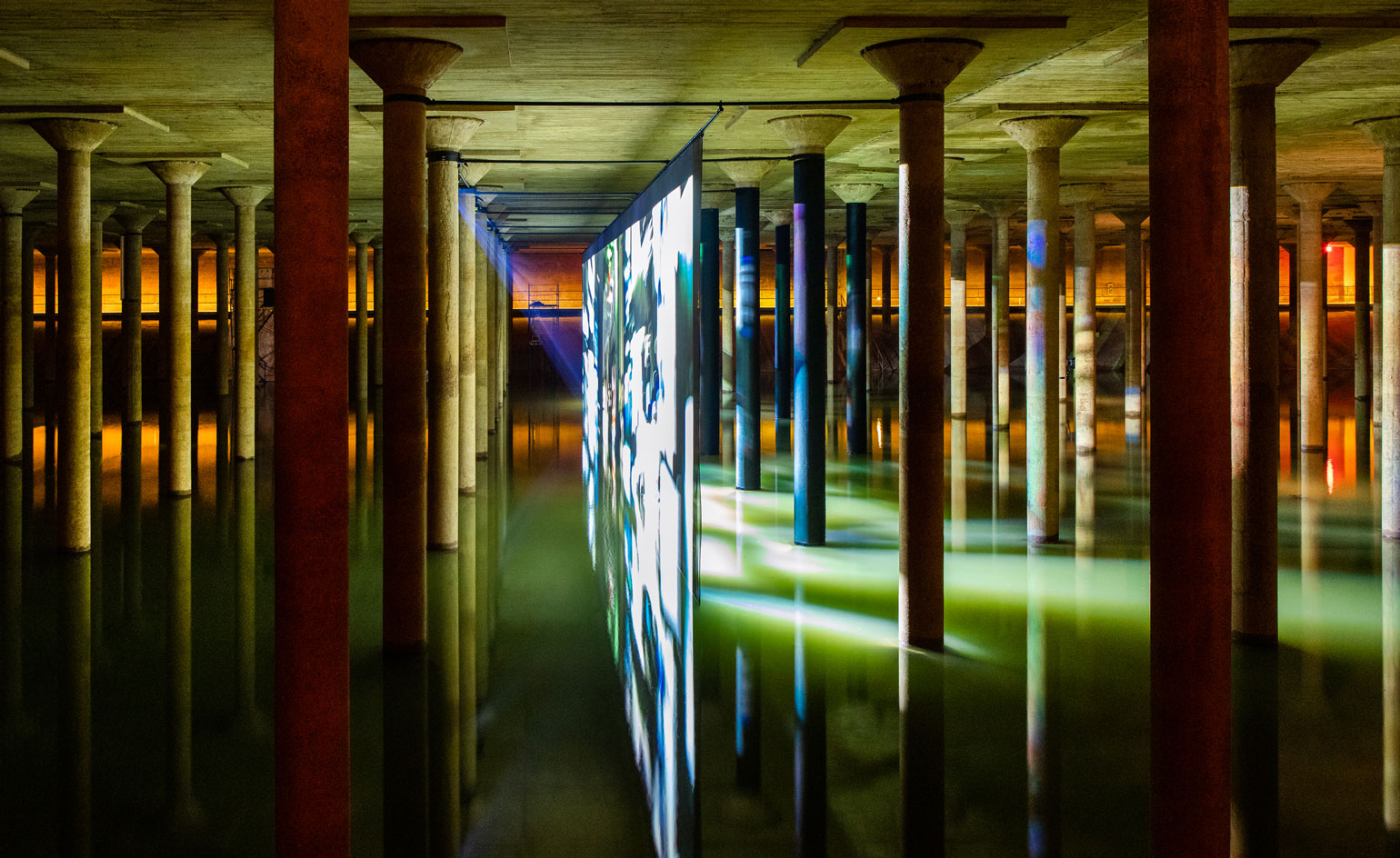
Anri Sala’s work explores the moment between the tangible and intangible. It exists somewhere between a time and a space, perhaps even ricocheting between the two. Sala’s thought-provoking and evocative time-based work goes to often difficult places, giving voice to thoughts, feelings and events for which language is not enough.
His latest major work is a monumental installation at the Bayou Buffalo Park Cistern, an underground reservoir in Houston, Texas. It combines film, sound and installation, tapping into the sense of equanimity of above and below that the artist associates with the ‘Space City’. Titled Time No Longer, the immersive work is inspired by African American astronaut and saxophonist Ronald McNair, who was launched on the Space Shuttle Challenger in 1986 with the intention of recording music in space. Had the rocket not exploded seconds after take-off, he would have.

Portrait of artist Anri Sala with his installation, Time No Longer, 2021, in the Buffalo Bayou Park Cistern, Houston
Subterranean and vast, the Buffalo Bayou Park Cistern is 87,500 sq ft large and 25ft tall, with 221 columns throughout. It evoked space exploration to Sala, who visited the space with one idea in mind, but recalled the story of McNair when standing inside the unique structure and went with that instead.
‘Every person who travels so far away from Earth is a pioneer by nature, but McNair was also a man who aimed to be the very first person to seriously record music in space,’ Sala says.
Projected intermittently onto translucent Hologauze is a turntable, floating, weightless. The stylus grasps for purchase on the record’s grooves, sometimes managing to communicate music, other times skipping and revolving back into space resonant of the moment McNair never played. As the motion repeats we hear snippets of music.

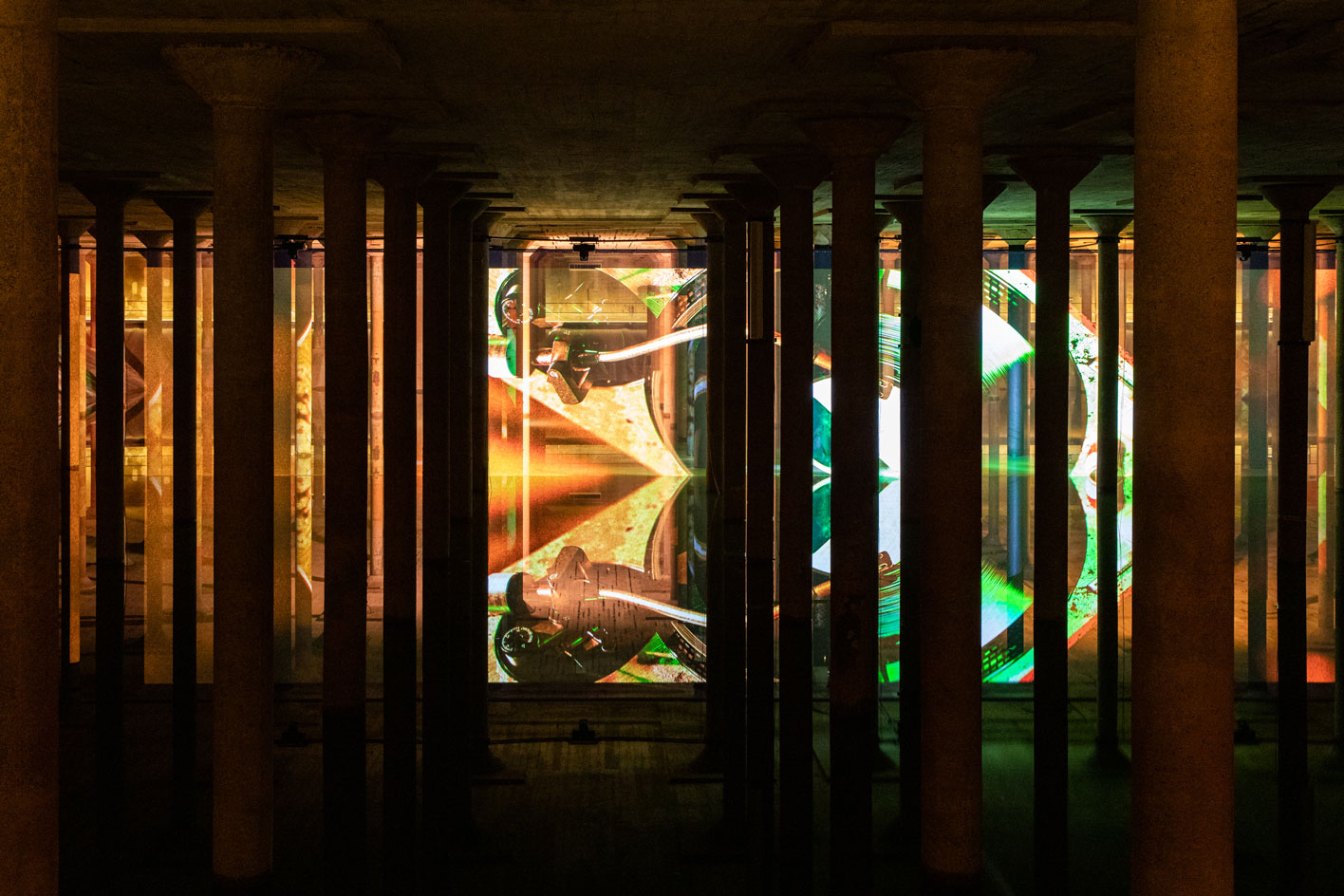
Anri Sala, Time No Longer, 2021
‘It’s like a train of thought, or of music being continuously interrupted and us somehow wanting to make sense of this interruption,’ Sala explains.
The screen is only visible when the film is projecting, leaving the viewer to contemplate the space in darkness. When the film is running, it is reflected in the surrounding water, creating the illusion of infinite turntables tumbling through infinite space.
The work’s soundtrack is a mixed clarinet and saxophone rendition of Olivier Messiaen’s Quartet for the End of Time, perhaps the most famous piece of music composed in captivity. Written by Messiaen while in a German prisoner-of-war camp during the Second World War, the music communicates a deep sense of loneliness for Sala.

In the recording, it’s hard to distinguish one instrument from the other, a deliberate effect. ‘Sometimes it sounds like one and sometimes like the other. It is also playing with this idea that the clarinet might sound like a saxophone before it exists, in a sense asking what would a song sound like before it plays?’
The original music McNair intended to record was due to feature on the album Rendez-vous, in collaboration with French composer Jean-Michel Jarre. It was later performed and recorded by Jarre at a tribute concert following the accident. Sala has used jazz in his work previously and is drawn to the music for its lack of narrative. The work Long Sorrow (2005) saw him suspend the saxophonist Jemeel Moondoc 60ft in the air from a disused housing project in Berlin.
‘He was anchored in space and he used music as a way to make his mind drift away from the situation he was in, while Time No Longer is the other way around, because it's about drifting in space, like the turntable, but being anchored in time.’
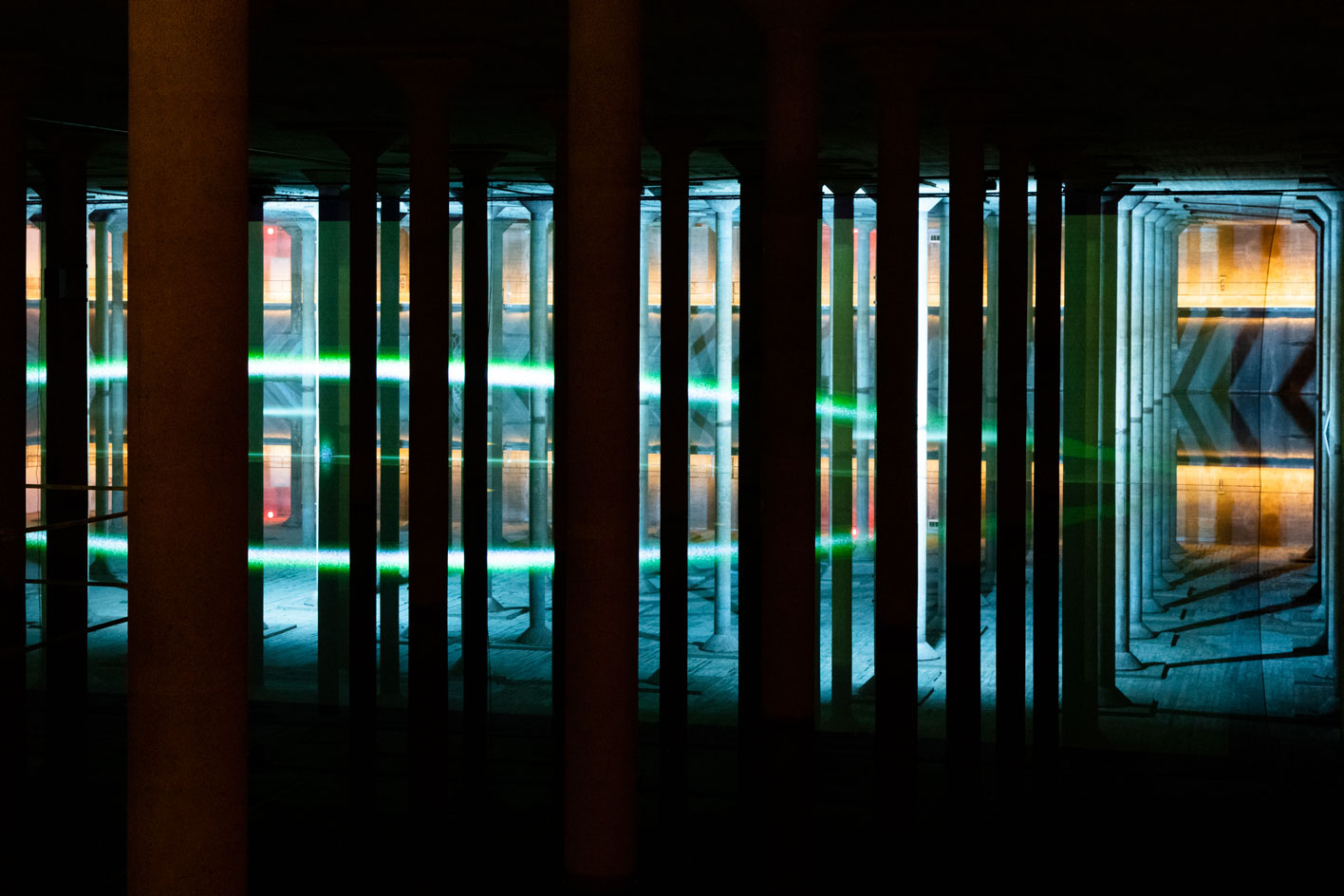
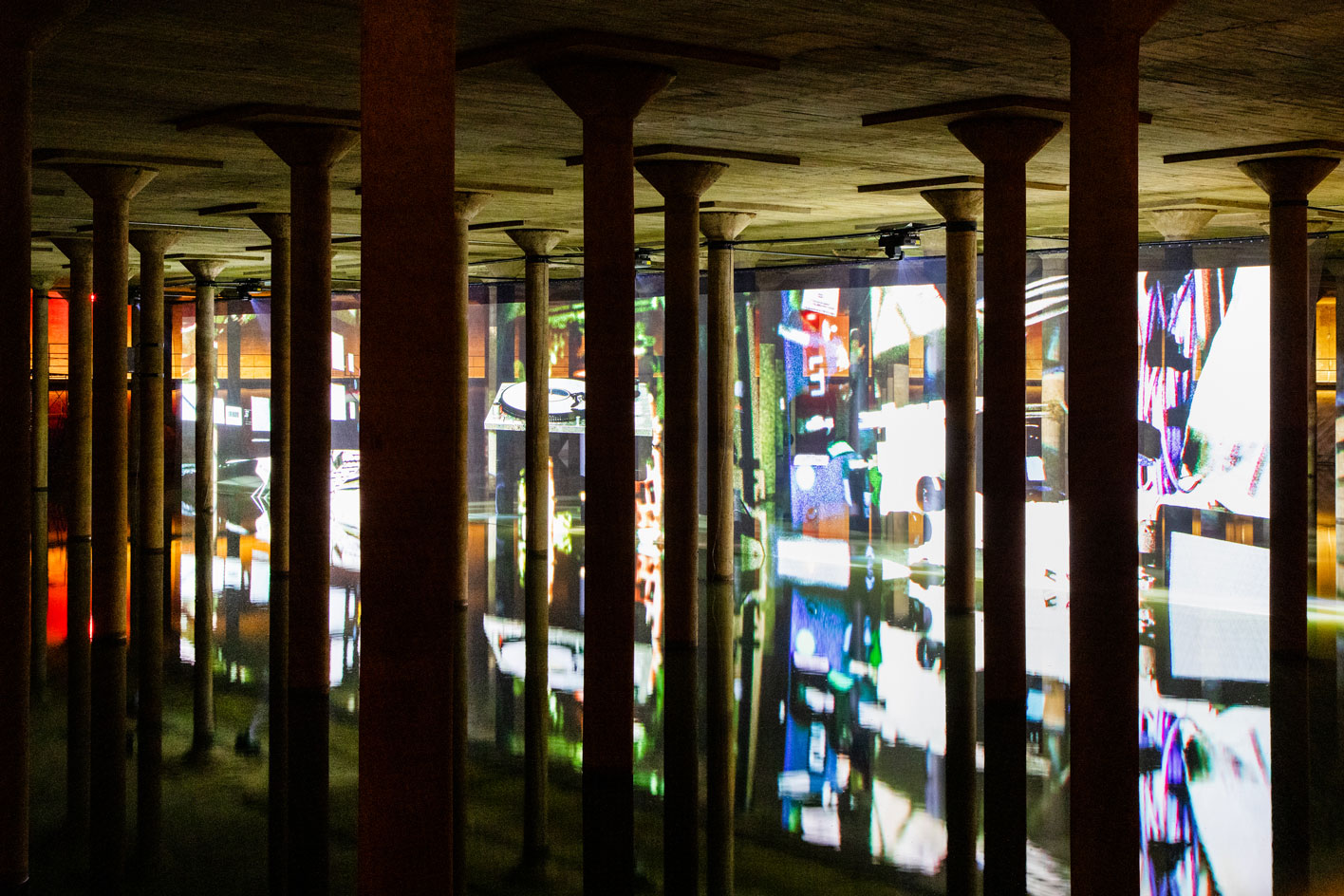
Time No Longer, like Long Sorrow and Answer Me (2008) – which was shot in a geodesic dome at Teufelsberg in Berlin – relates to its architecture. ‘I like to find a narrative that conveys the attributes of the space. One which treats the space as if it was an organ, not merely a receptacle.
‘In other words, I tend to try to approach space as an instrument, rather than a backdrop to a narrative that’s being played solo within it.’ Sala explains. ‘When the space becomes tangible, allowing it to play a collaborative part in a form of retelling, it elicits curiosities about context and history, quite unlike and beyond those that storytelling conveys.’
A performance without a performer, a lonely turntable floating through space, this reflective work speaks to the experience of many of us in recent times.
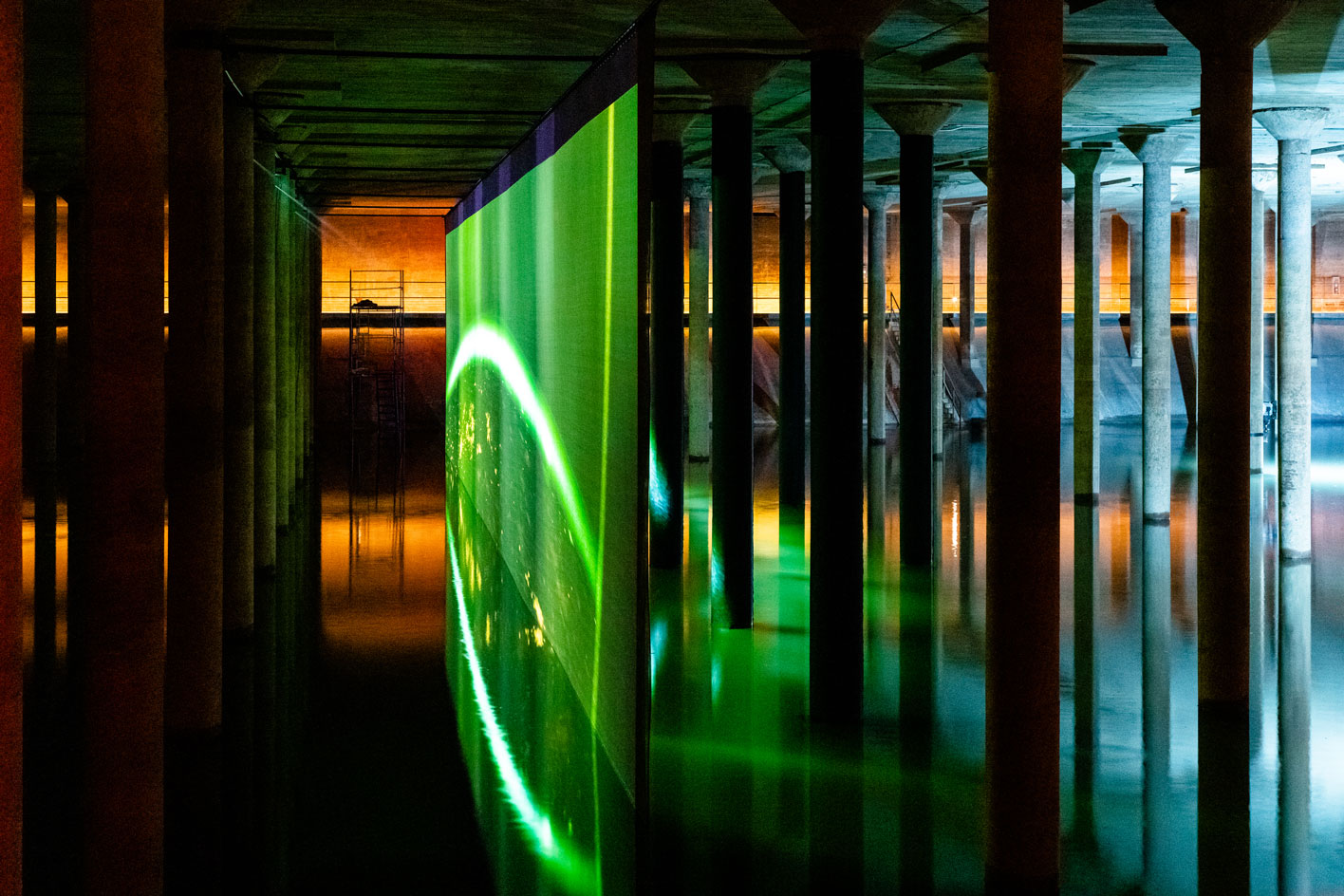
INFORMATION
‘Time No Longer’, until 12 December 2021, Buffalo Bayou Park Cistern, Houston
Receive our daily digest of inspiration, escapism and design stories from around the world direct to your inbox.
ADDRESS
105b Sabine St
Houston, TX 77007
Amah-Rose Abrams is a British writer, editor and broadcaster covering arts and culture based in London. In her decade plus career she has covered and broken arts stories all over the world and has interviewed artists including Marina Abramovic, Nan Goldin, Ai Weiwei, Lubaina Himid and Herzog & de Meuron. She has also worked in content strategy and production.
-
 Volvo’s quest for safety has resulted in this new, ultra-legible in-car typeface, Volvo Centum
Volvo’s quest for safety has resulted in this new, ultra-legible in-car typeface, Volvo CentumDalton Maag designs a new sans serif typeface for the Swedish carmaker, Volvo Centum, building on the brand’s strong safety ethos
-
 We asked six creative leaders to tell us their design predictions for the year ahead
We asked six creative leaders to tell us their design predictions for the year aheadWhat will be the trends shaping the design world in 2026? Six creative leaders share their creative predictions for next year, alongside some wise advice: be present, connect, embrace AI
-
 10 watch and jewellery moments that dazzled us in 2025
10 watch and jewellery moments that dazzled us in 2025From unexpected watch collaborations to eclectic materials and offbeat designs, here are the watch and jewellery moments we enjoyed this year
-
 Out of office: The Wallpaper* editors’ picks of the week
Out of office: The Wallpaper* editors’ picks of the weekIt’s wet, windy and wintry and, this week, the Wallpaper* team craved moments of escape. We found it in memories of the Mediterranean, flavours of Mexico, and immersions in the worlds of music and art
-
 Nadia Lee Cohen distils a distant American memory into an unflinching new photo book
Nadia Lee Cohen distils a distant American memory into an unflinching new photo book‘Holy Ohio’ documents the British photographer and filmmaker’s personal journey as she reconnects with distant family and her earliest American memories
-
 Ed Ruscha’s foray into chocolate is sweet, smart and very American
Ed Ruscha’s foray into chocolate is sweet, smart and very AmericanArt and chocolate combine deliciously in ‘Made in California’, a project from the artist with andSons Chocolatiers
-
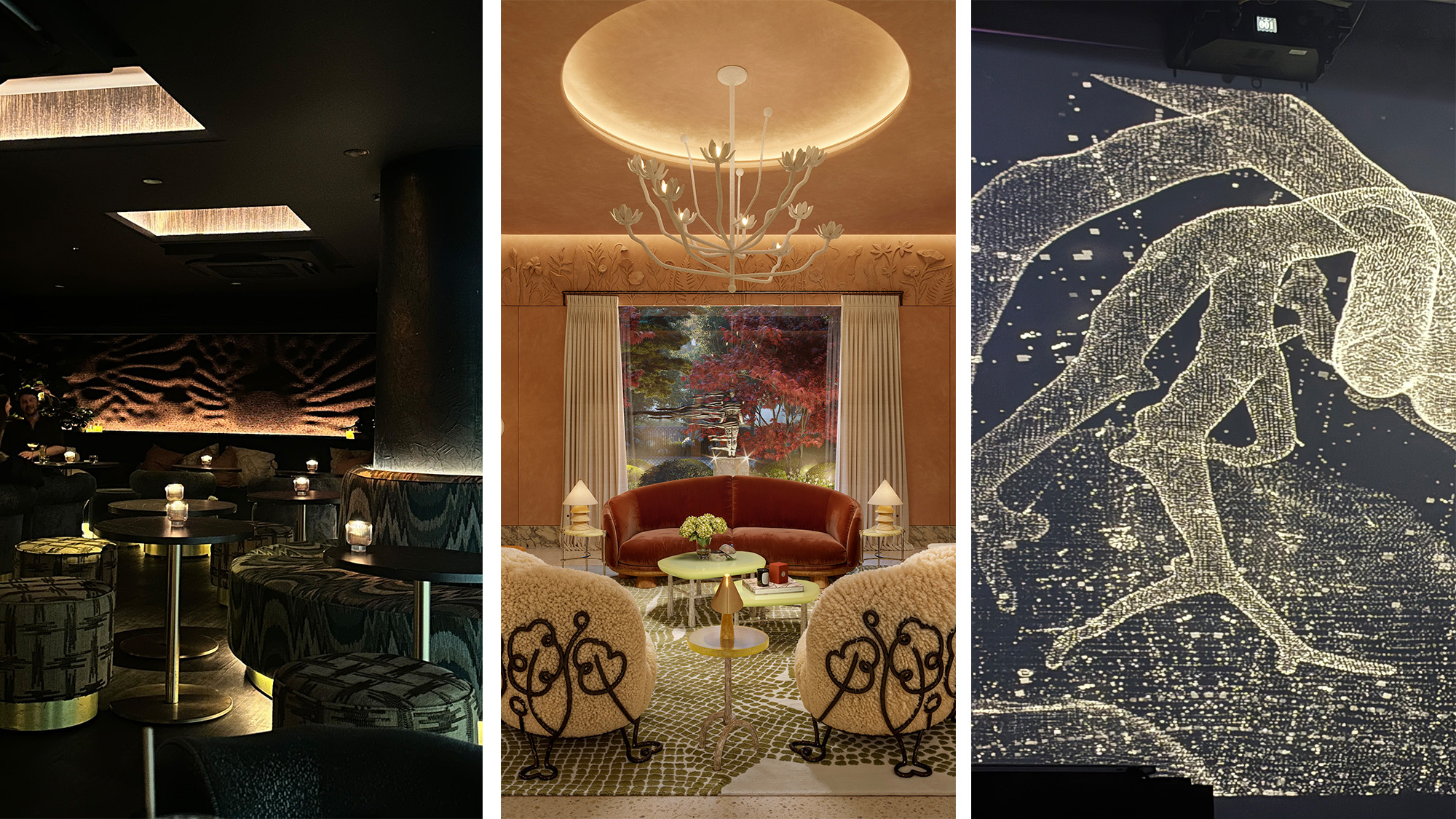 Out of office: The Wallpaper* editors’ picks of the week
Out of office: The Wallpaper* editors’ picks of the weekThe clocks have gone back in the UK and evenings are officially cloaked in darkness. Cue nights spent tucked away in London’s cosy corners – this week, the Wallpaper* team opted for a Latin-inspired listening bar, an underground arts space, and a brand new hotel in Shoreditch
-
 Jamel Shabazz’s photographs are a love letter to Prospect Park
Jamel Shabazz’s photographs are a love letter to Prospect ParkIn a new book, ‘Prospect Park: Photographs of a Brooklyn Oasis, 1980 to 2025’, Jamel Shabazz discovers a warmer side of human nature
-
 The Hammer Museum in Los Angeles launches the seventh iteration of its highly anticipated artist biennial
The Hammer Museum in Los Angeles launches the seventh iteration of its highly anticipated artist biennialOne of the gallery's flagship exhibitions, Made in LA showcases the breadth and depth of the city's contemporary art scene
-
 Thomas Prior’s photography captures the uncanny fragility of American life
Thomas Prior’s photography captures the uncanny fragility of American lifeA new book unites two decades of the photographer’s piercing, uneasy work
-
 Central Park’s revitalised Delacorte Theater gears up for a new future
Central Park’s revitalised Delacorte Theater gears up for a new futureEnnead Architects helmed an ambitious renovation process that has given the New York City cultural landmark a vibrant and more accessible future